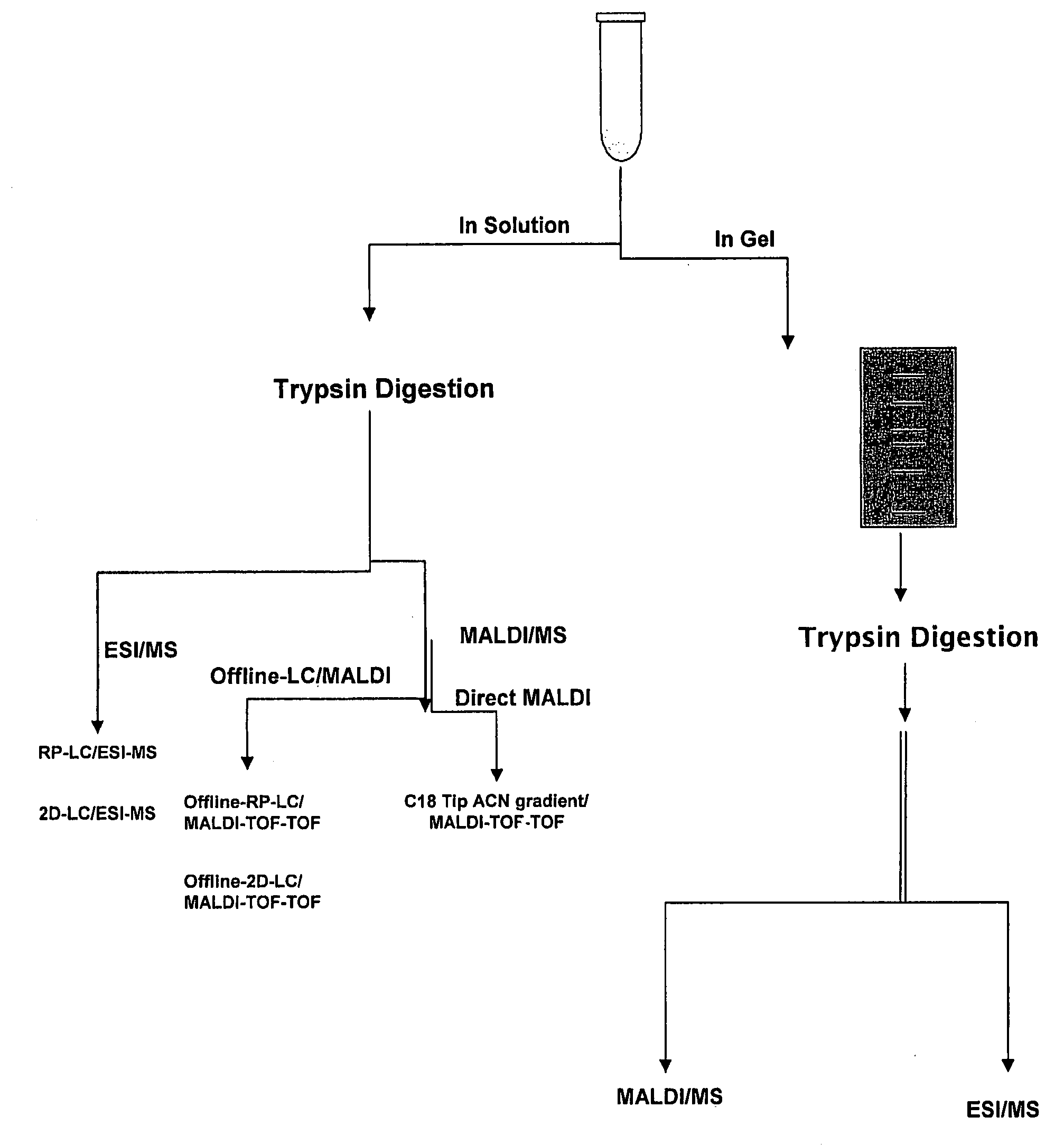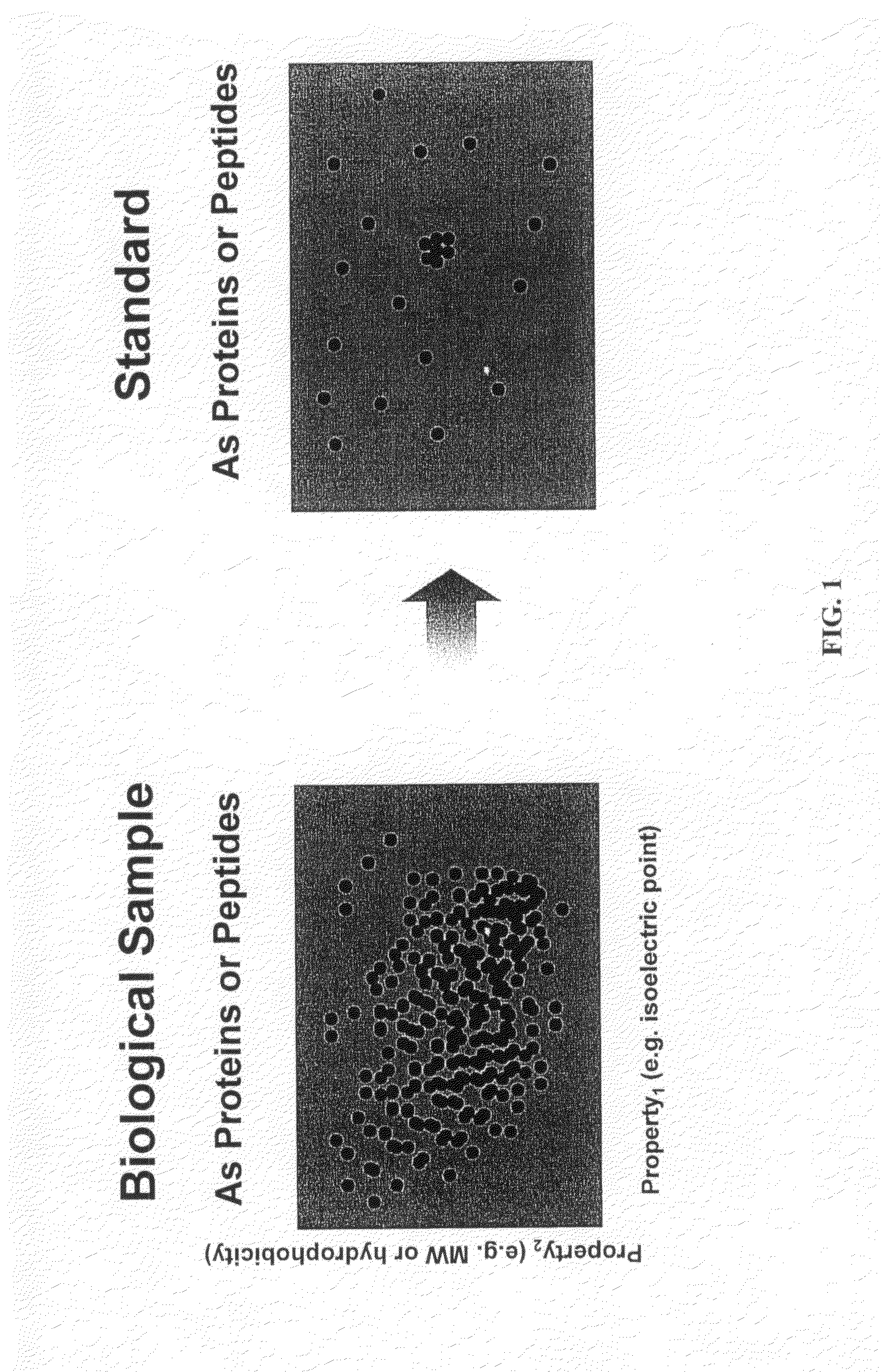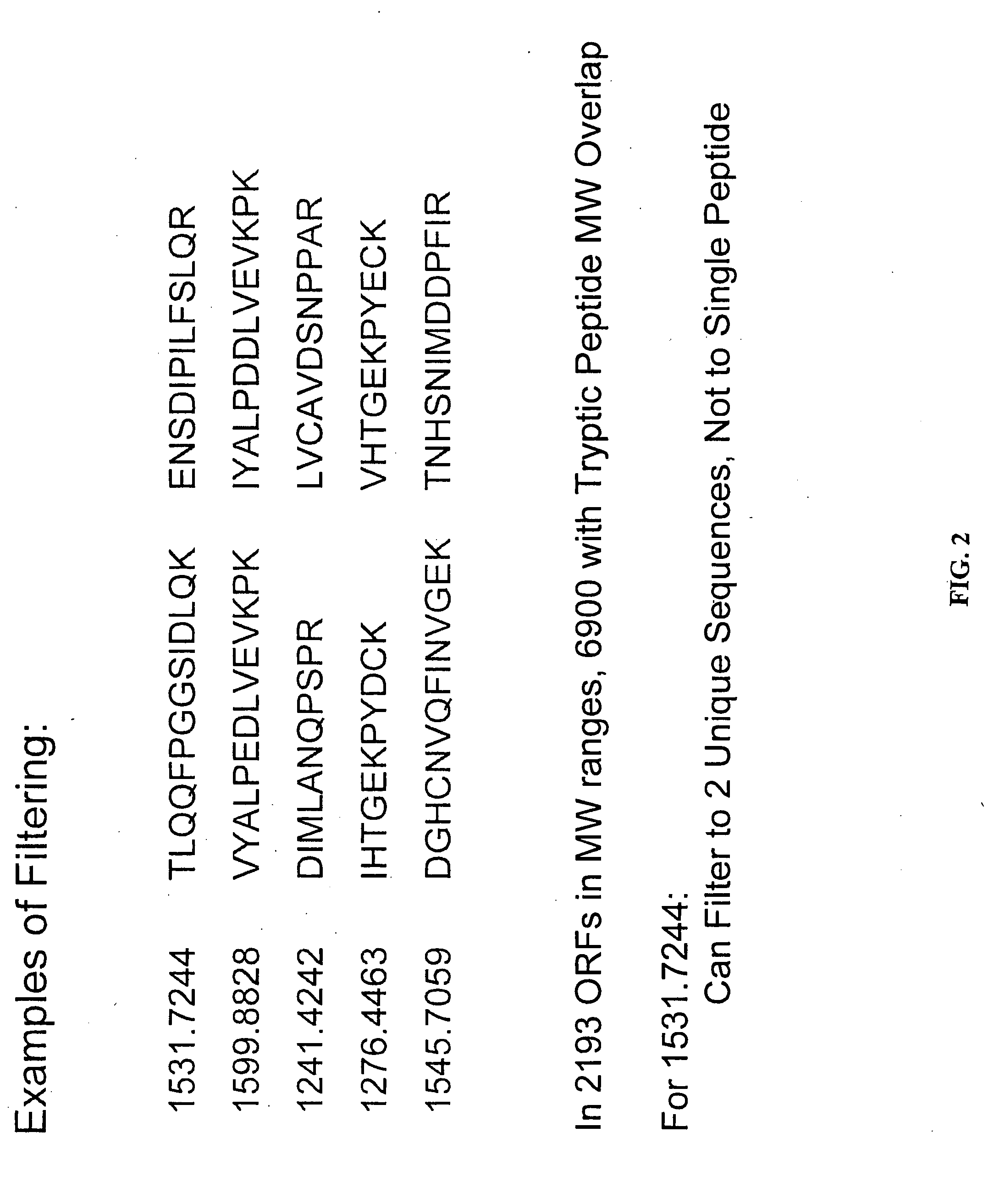Proteome Standards for Mass Spectrometry
a mass spectrometry and proteome technology, applied in the field of proteome standards for mass spectrometry, can solve the problems of more difficult to identify individual proteins and less useful gel electrophoresis for distinguishing, and achieve the effect of calibrating the sensitivity and accuracy of laboratory equipmen
- Summary
- Abstract
- Description
- Claims
- Application Information
AI Technical Summary
Problems solved by technology
Method used
Image
Examples
example 1
Selection of Initial Protein Pool
[0097]An initial protein pool comprising human protein sequences was selected. From this initial protein pool, a set of proteins was selected for a proteome standard set. The initial protein pool was selected from human open reading frame sequences (ORFs). The ULTIMATE™ ORF clone Collection (available by catalog on the world wide web at Invitrogen.com, Invitrogen, Carlsbad, Calif.) was used as a source of human ORFs. This selection may be conducted using computer software and bioinformatics methods known to those of ordinary skill in the art, as applied to publicly available human genome sequences. An initial review of the ranges of molecular weights of human ORFs available in the collection is as follows:
32-26 kDA:1064 ORFs 48-52 kDA:632 ORFs70-75 kDA:298 ORFs100-115 kDA: 199 ORFs
[0098]It was found that there were a large number of closely related proteins in the collection due to existing homologs in the human genome, and to splice variants. In fil...
example 2
Selection of a Proteome Standard Set
[0110]A proteome standard set comprising 20 proteins was selected from the initial protein pool using the following criteria:
[0111]1. Selected proteins range in molecular weight between 33-114 kDa.
[0112]2. Purity of each protein is such that an equimolar mixture of 20 proteins contains no individual contaminating protein at greater than 1% of the total mixture. Contamination of the sample is evaluated based on mass and on molar amount such that no contaminating protein is greater than 1% of the mass or molar amount of the total mixture.
[0113]3. Purity of an equimolar mixture of the 20 selected proteins is in the range of 95%-99% of the mixture. Purity is determined by the absence of contaminating non-human proteins, such as, for example, E. coli proteins.
example 3
Preparation of Equimolar Proteome Standard Sets and Use in Standardization
[0114]Proteins can be prepared using standard recombinant techniques, including expression using the vector pET-DEST42 (Invitrogen, Carlsbad, Calif.). In the purification procedures, inclusion body formation is maximized, inclusion bodies are purified, solubilized by denaturization, and the proteins purified under denatured conditions. Proteins may be purified using, for example, anion exchange chromatography. Reverse Phase chromatography in TFA / Acetonitrile is used as a final step in purification. This volatile buffer systems is more convenient for lyophilization.
[0115]A proteome standard set is prepared of 20 proteins mixed in equimolar amounts in a container. Each of the 20 proteins is present at 5 picomoles, for a total of 100 picomoles of protein. Characteristics of the standard set include the following:
[0116]1. The sample of 20 different proteins will have molecular weights between 33 kDa to 114 kDa.
[01...
PUM
 Login to View More
Login to View More Abstract
Description
Claims
Application Information
 Login to View More
Login to View More - R&D
- Intellectual Property
- Life Sciences
- Materials
- Tech Scout
- Unparalleled Data Quality
- Higher Quality Content
- 60% Fewer Hallucinations
Browse by: Latest US Patents, China's latest patents, Technical Efficacy Thesaurus, Application Domain, Technology Topic, Popular Technical Reports.
© 2025 PatSnap. All rights reserved.Legal|Privacy policy|Modern Slavery Act Transparency Statement|Sitemap|About US| Contact US: help@patsnap.com



